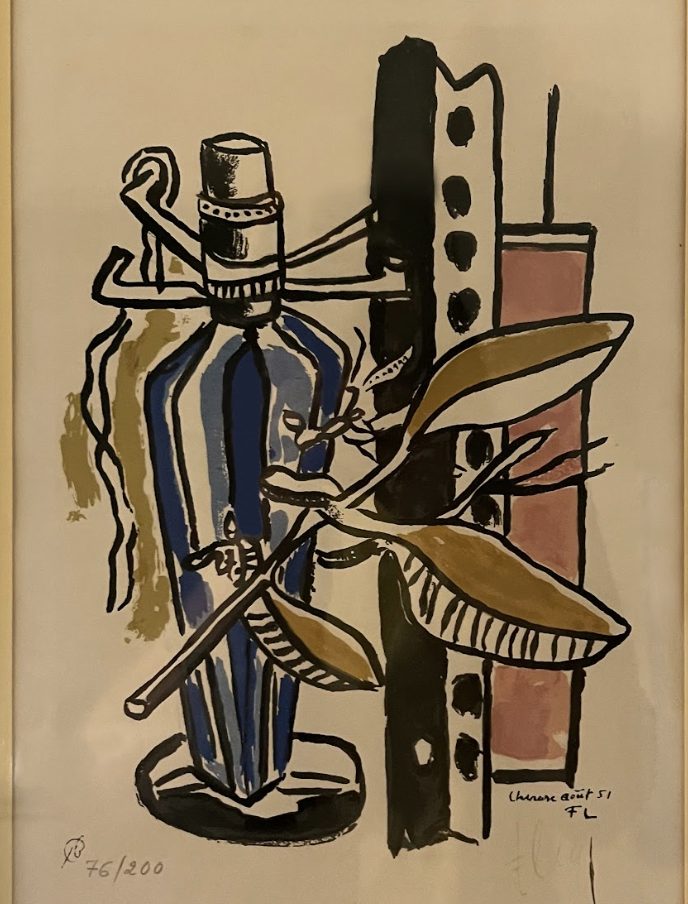By: Brian Lines
Students usually use our Warner Memorial Library for three functions: a quiet space to get work done or get away from people, study rooms as a social environment and sometimes they check out a book or two. I’m going to provide you with something new in the library to do whenever you’re not getting work done or spending time with friends.
There are around 30 different pieces of art publicly available in the Warner Memorial Library, and the range of variety is quite astonishing. Easily, the majority of pieces of art in the library are by George H. Rothacker, and most of them detail seasonal scenes of our campus.

The 13 paintings of our campus by Rothacker are found around the walls of the first floor of the library, along with two additional works by Rothacker. The final, 16th piece by Rothacker featured in our library is on the top floor and is titled “Disappointment.” It features what looks like seven school-aged children outside of a classroom in Cuba.
One of the additional pieces on the first floor is titled “Hemingway Slept Here” and it details a scene of what it would look like if Ernest Hemingway were sitting in his old home in Cuba as it is today, filled with his paintings and books and such.
While Rothacker fills most of the wall space in our library, he is not the only artist featured. Warner Library has a variety of prints of famous paintings and works of art. One of my favorites is a print of “The Last Judgment” on the top floor. “The Last Judgment” is an engraving by Charles Mottram of a painting by John Martin; essentially, we have a print of an engraving of a painting. “The Last Judgment” features a very dramatic (almost Tolkien-esque) depiction of what seems to be the Biblical end of times.
Back down on the first floor, we can see four more pieces donated by Earl and Judi Reeder. These four pieces are prints of paintings by Andrew Wyeth. “Soaring,” a painting of three large vulture-like birds, is joined by a painting of a white fence on a snowy hillside (I was unable to find a title). Meanwhile “Liberty Launch,” a painting of a small boat in front of a house is joined by “Alvaro and Christina,” a painting of the interior of a house featuring a dirty blue door.
While there are many more pieces of art found in the Warner Library, allow me to end this article with In-Ho Oh. In-Ho Oh was a 26-year-old graduate student from Korea who was studying at the University of Pennsylvania in the 1950s. According to NBC News, “On April 28, 1958, he was walking from a mailbox back to his home when he was beaten to death by a group of 11 black youth.” The death of In-Ho Oh sparked political urgency in the city of Philadelphia to combat crime, but the parents of the victim had a different mindset. Framed in the Warner Library is a copy of the letter the parents of In-Ho Oh sent to the mayor of Philadelphia. In the letter, the parents plead with the mayor to give the assailants the “most generous treatment possible.” They also sent a petition to start a fund for the children for their “religious, educational, vocational and social guidance.” They described their sorrow for the death of their son as “being turned into Christian purpose.” Unfortunately, according to the Philadelphia Inquirer, one of the assailants was sentenced to death, three to life sentences and the rest to prison terms.
Along with the copy of the letter from In Ho Oh’s parents, the Warner Library features a fan from Korea and a painting by Ki Chang Kim of a large mountain. This collection on In-Ho Oh can be found on the first floor of the library.
So next time you’re in the library, not wanting to do work or be around people, I highly recommend walking around the floors admiring the art. Maybe you’ll find a favorite piece, or learn a new story.
Sources: NBC News, The Inquirer
